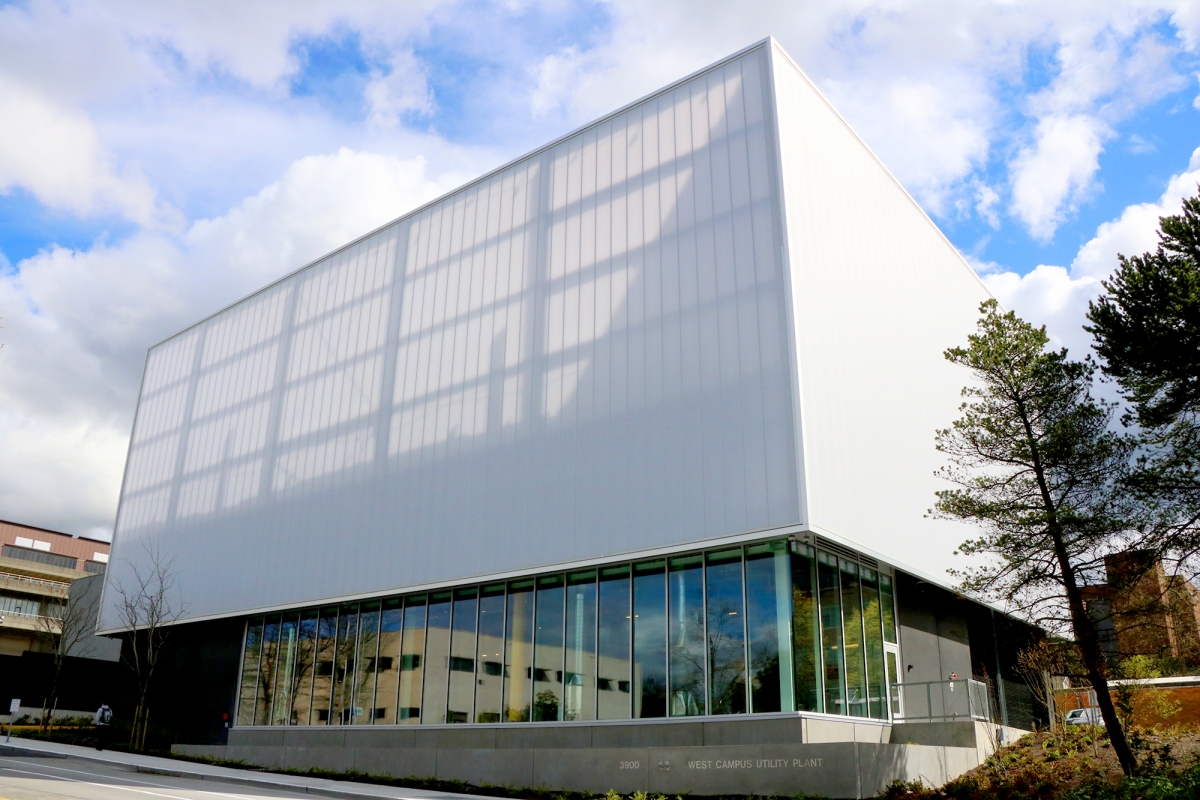
The tall white screens, glowing softly at night, draw the eye from blocks away. At the base of the building, 10-foot tall LED screens play informative videos showcasing sustainability efforts at the University of Washington, while windows in between provide a glimpse at the workings of the equipment inside.
The recently completed West Campus Utility Plant near the corner of University Way and Pacific Street provides cooling and emergency power to meet the needs of UW's growing west campus area. The plant brings efficiency and responsiveness, helping UW use less energy to provide cooling, and is expected to be certified as Envision silver or gold, a ranking similar to the more well-known LEED system.
Sustainability is central to the plant's operation and construction, and the building was designed to provide an interactive element of sustainability messaging. The video screens, open windows and eye-catching white wall ringing the top of the building all play a part.
"From its inception, a goal of the West Campus Utility Plant was to develop a messaging system, an interpretive element, enabling the public to gain an understanding of the University's commitment to the environment and energy conservation," said Bob Puzauskie, senior planner with the Office of the University Architect.
The central piece of the interpretive element is the large vertical LED panels mounted inside the large windows facing University Way. These video screens will share UW's sustainability stories through student-designed graphics and videos. The first set have been developed through a course led by Kristine Matthews, Associate Professor in Visual Communication Design, in collaboration with UW Sustainability, the Office of the University Architect, Facilities Services, and the plant's design/build team.
Pedestrians on the Ave or coming to campus via the Burke-Gilman trail will see the entertainingly informative display showcasing sustainability efforts across the UW.
"I was very attracted to the project because I saw it as a great opportunity for the design students to not only solve a unique and challenging design problem, but to do it in the real world," Matthews said. "They literally got to take their ideas to the street.'"
The design students were working on creating the concept and the videos for the display while the plant was still under construction. In order to get a sense of the scale of the video screens, at one point the class took a field trip to the building site with large graphics printed at actual size, and the construction crew held them up where the screens would eventually be installed so the students could see if the size and scale of the designs were correct.
"Projects like these are hugely empowering for students," Matthews said. "They were Design seniors about to graduate, and I think working on a large-scale, very real project showed them how their skills can quickly translate to applied, relevant, exciting projects."
The initial content on the screens includes information on a variety of UW student groups, set to video images connecting the groups' work to aspects of the environment. The video displays provide an opportunity for a variety of sustainability messages over time, as well as the potential to accommodate future technologies and information development.
More information on the videos shown and the plant itself can be found at sustainability.uw.edu/wcup